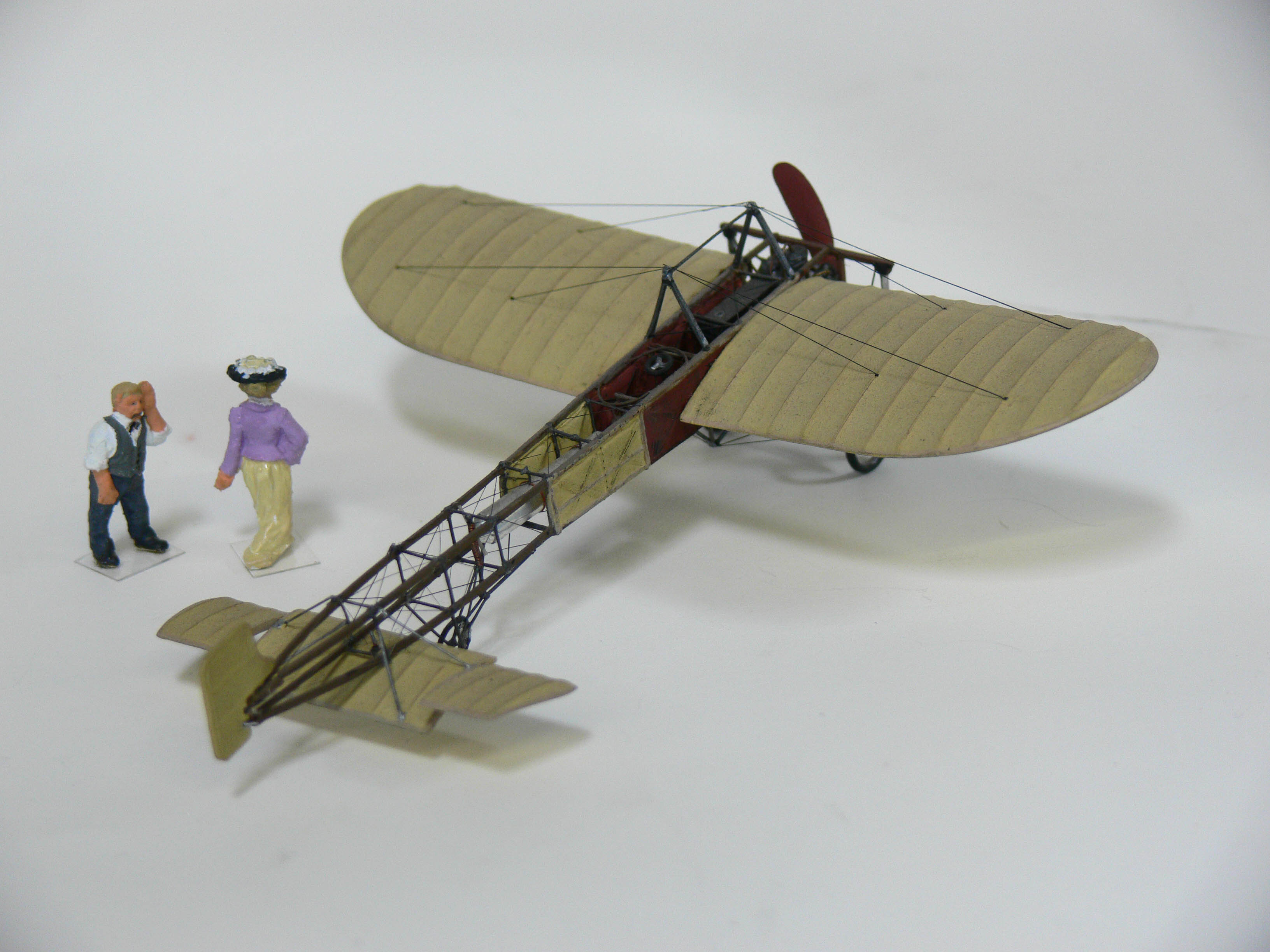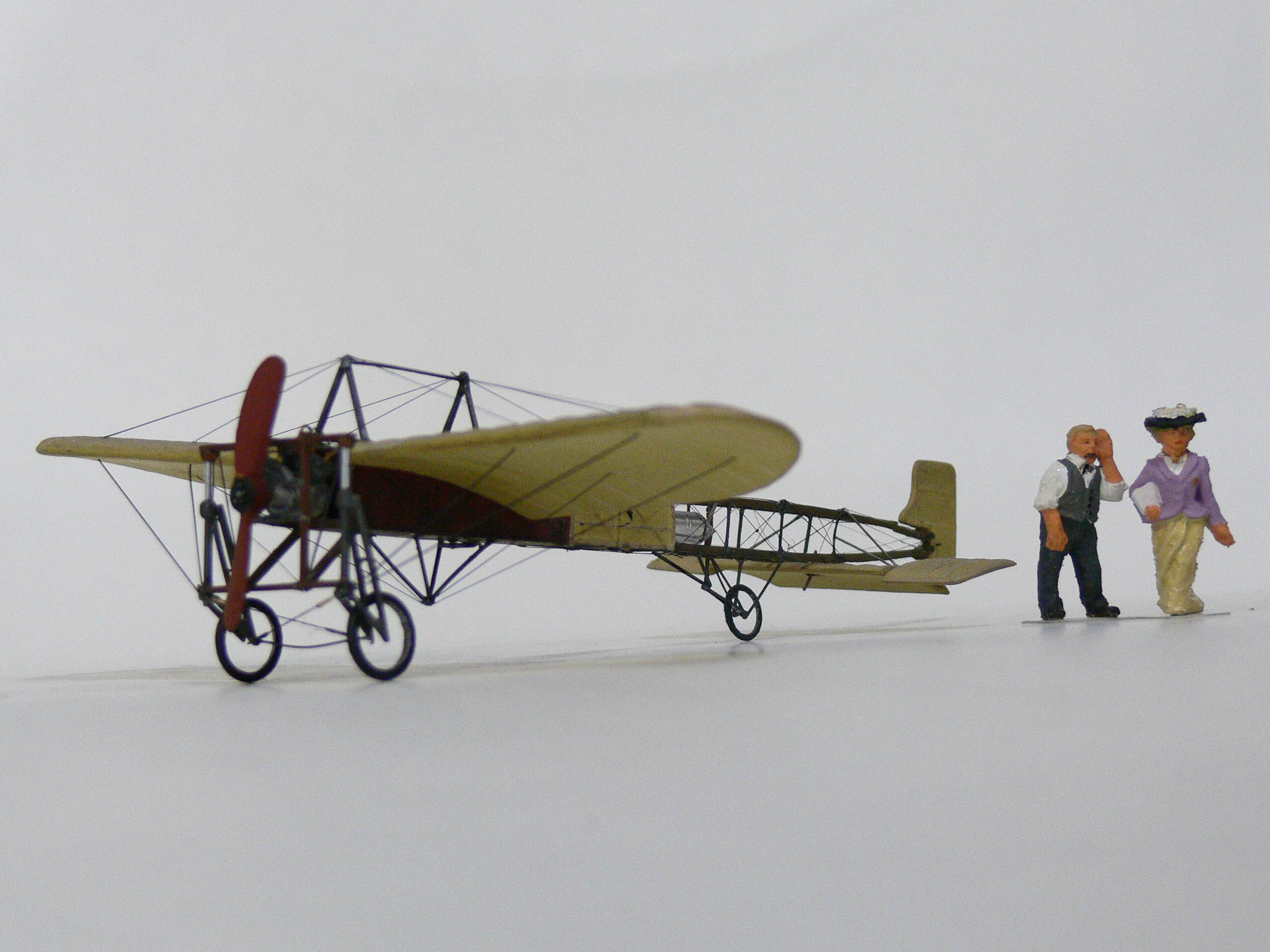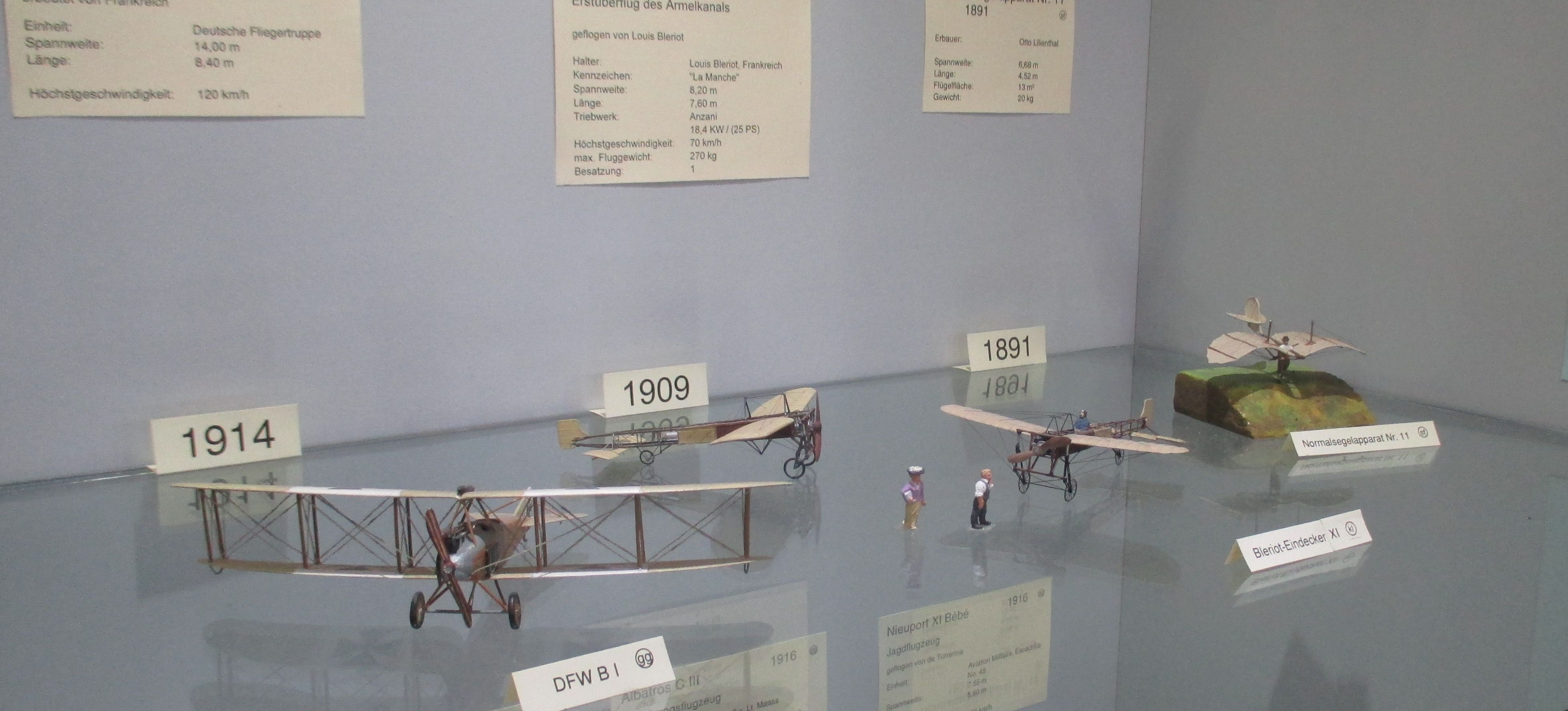Model of the month december 2022 the Blériot XI
The Triumphator … the Blériot XI
The model: A filigree work of art
The builder of the 1/72 kit is Michael Klinger from Hamburg. His Blériot XI combines aircraft modeling and craftsmanship. Based on a kit from the Russian company NOVO, which in turn was based on the molds of the British FROG kit of 1965, he created this amazingly authentic model as early as 1979 with considerable reworking of essential parts. The bracing was created from drawn cast burr.
The original: Triumph of Technology
The French entrepreneur, pilot and aviation pioneer Louis Blériot (1872-1936) developed monoplane aircraft from 1906 onwards, made the first successful cross-country flight in 1908 (14 km from Toury to Artenay in 11 min) and was the first to cross the English Channel in flight with his single-seater and single-engine design "Blériot XI" on July 25, 1909 in 37 min: a milestone in aviation. (And by the way, inspiration for the feature film "Those Magnificent Men in their Flying Machines or How I flew from London to Paris in 25 Hours 11 Minutes" from 1965; still charming and funny!)
The Blériot XI in 1/72 scale - a whole 10 cm long is the small, completely braced work of art in the model show of the Aviation Museum.
The holder of the French pilot's license No. 1 then also became the first aviator to reach a speed of 100 km/h in 1910. The aircraft factory he founded, Blériot Aéronautique S.A., built mainly the very successful fighter planes of the SPAD series during World War I, and military and sports aircraft after the war.
Womanizer... The feasible dream of flying thrilled both sexes, young and old, in the years around 1910. And the Blériot XI was its symbol.
In fact, the "XI" was not only a record-breaking aircraft, but also the breakthrough for the constructive idea of the monoplane - and the turning point in Blériot's life's work. Until then, successes had alternated with frequent failures and setbacks. The perseverance of the designer, who had invested his entire fortune in aviation, triumphed with this pioneering feat of the first cross-country flight over the open sea, which was celebrated worldwide. The prize money of 1,000 English pounds (that would be about 110,000 € today!) offered for this achievement by the publisher of the newspaper "Daily Mail" and the fame were the basis of the economic success that followed: In the years before the First World War, the types from the Blériot factory were among the best-selling and most successful aircraft in the world. The Type XI alone was built more than 800 times in two main versions, licenses were issued in several countries.
Also, the Blériot XI in its later two-seat version marked the beginning of military use of aircraft as weapons. In addition to reconnaissance and courier flights, it was the Italian (1911/12) and French armies (1914) that first used this type for bombing and ground attacks respectively. The other nations were outraged - and soon followed suit.
Data sheet Blériot XI:
Length: 7.05 m
wingspan: 7,81 m
Engine: Anzani 3 cyl. semi-stern
Take-off weight: 320 kg
Speed: 74 km/h
PHOTO & BU 3: In good
I: In good company: Our Blériot in the model showcase of the aviation pioneers in hangar 1.
Could we make you curious? Then come and visit us in Ulmer Straße opposite the Hanover exhibition grounds - we look forward to seeing you!



